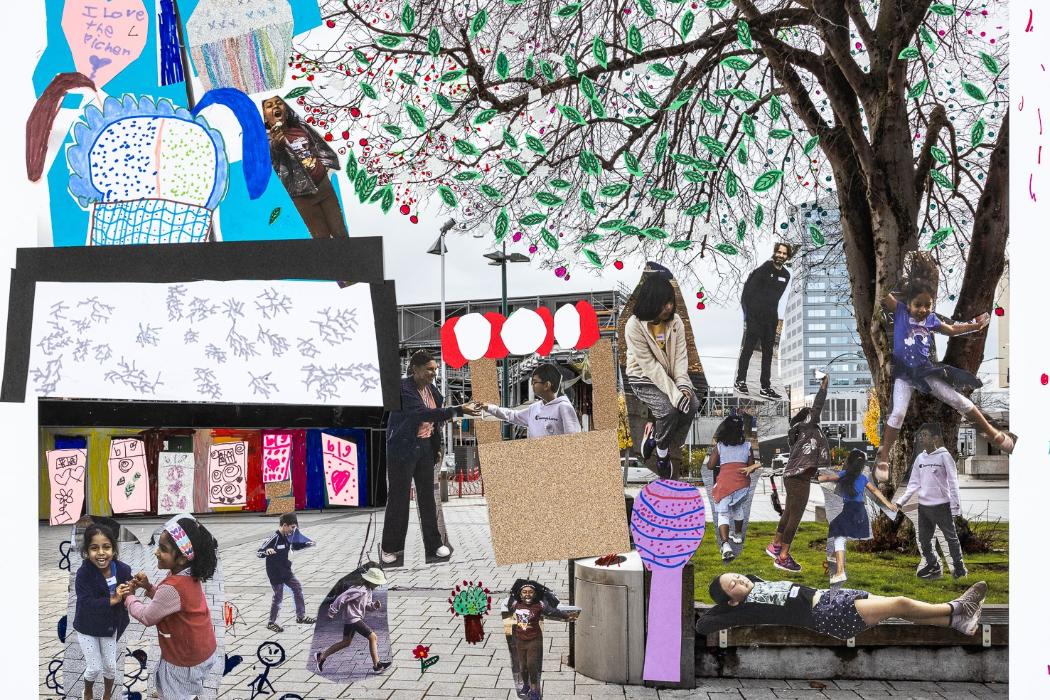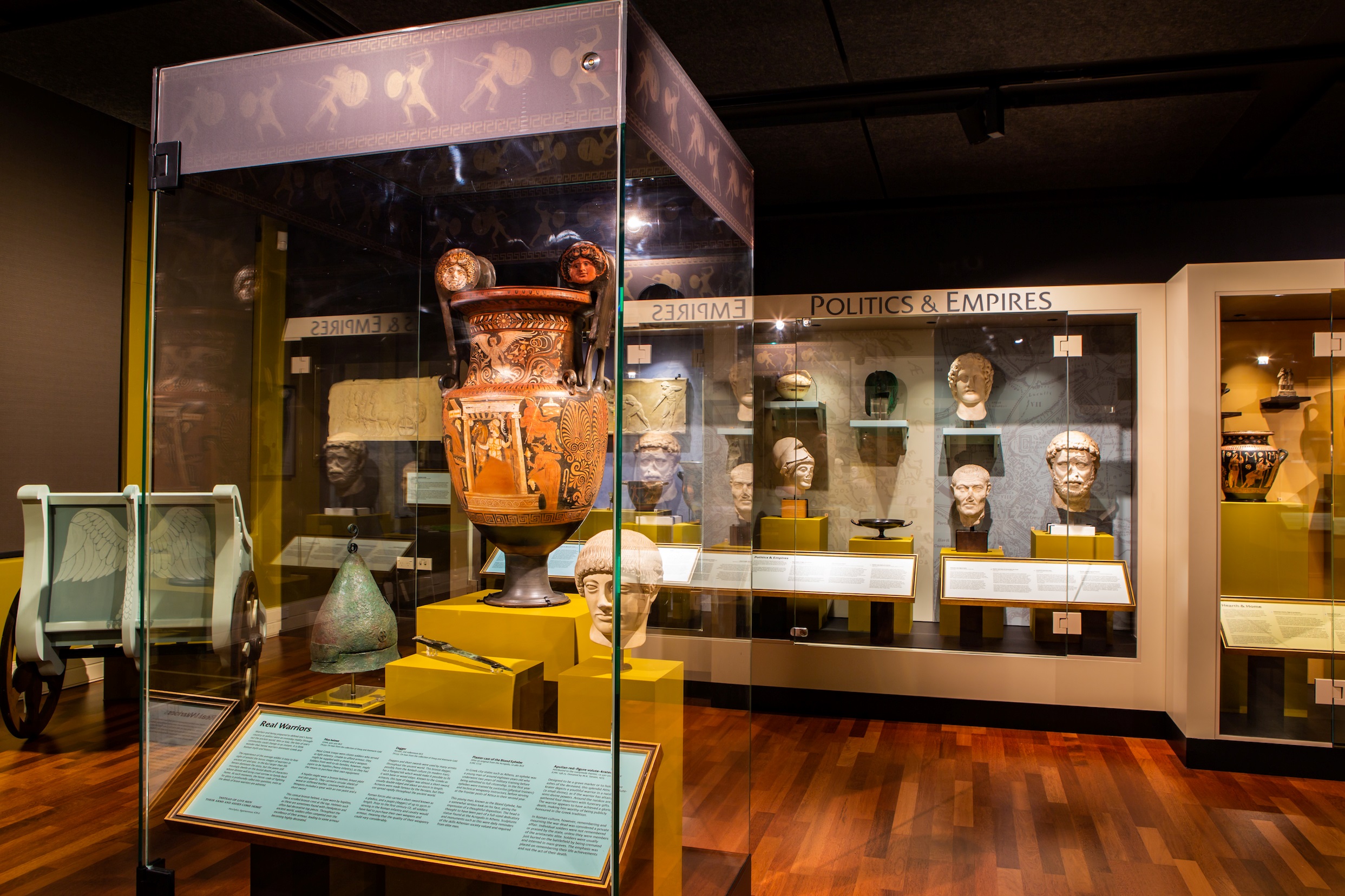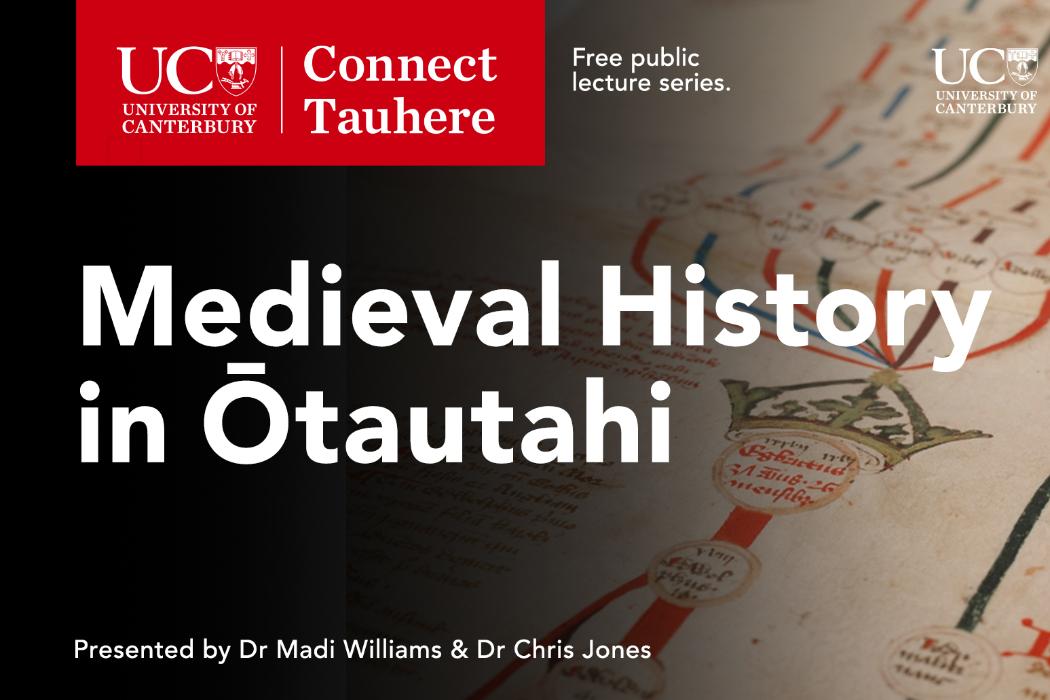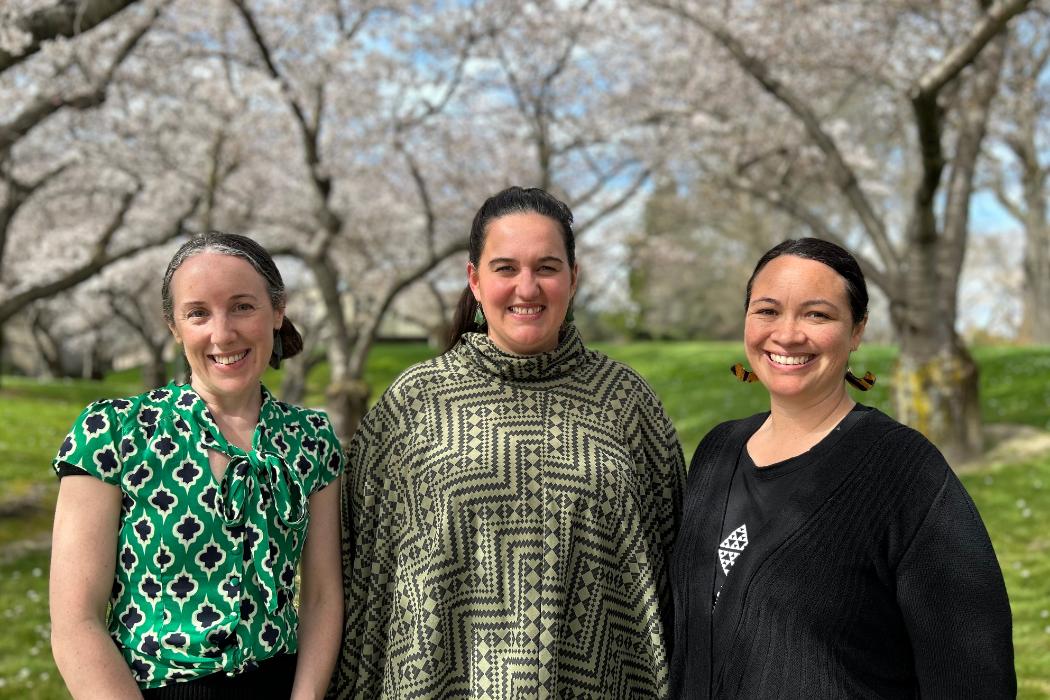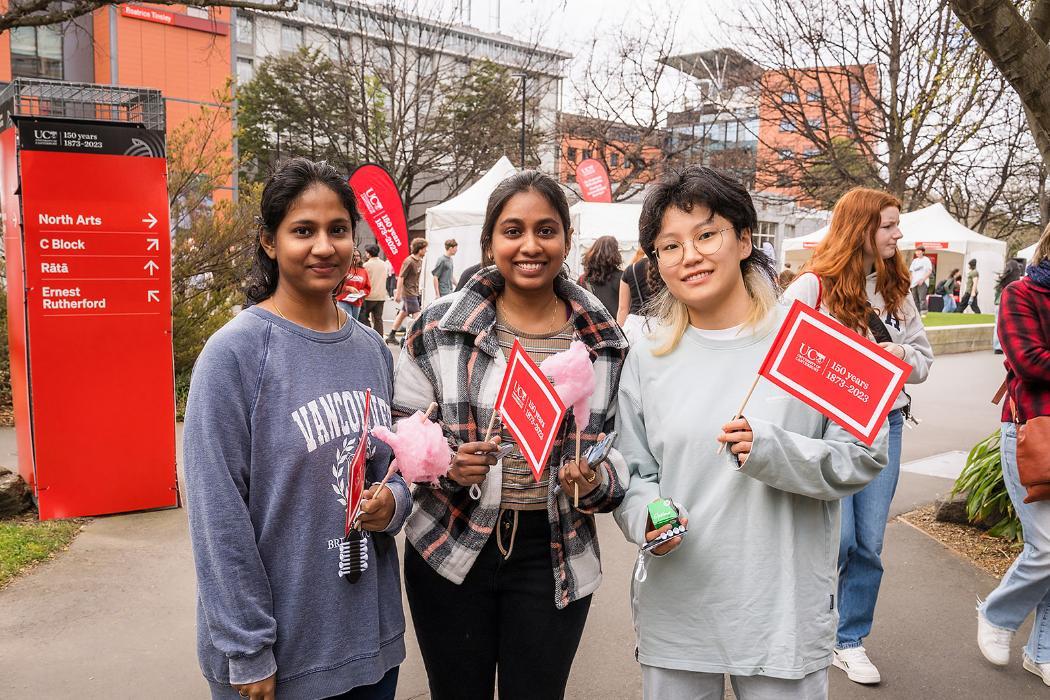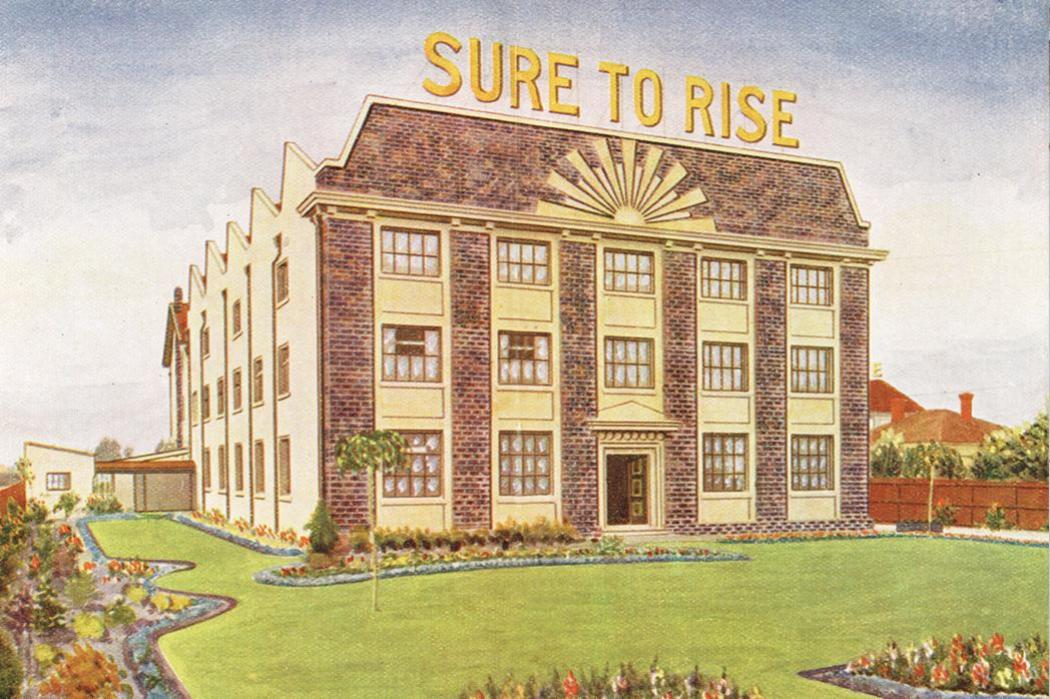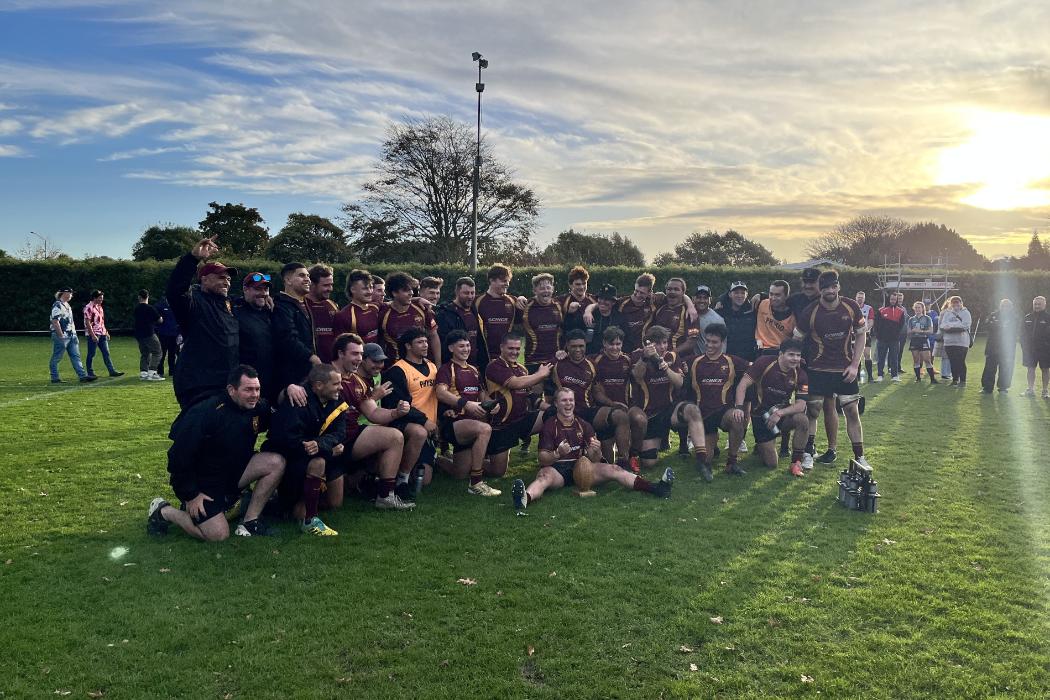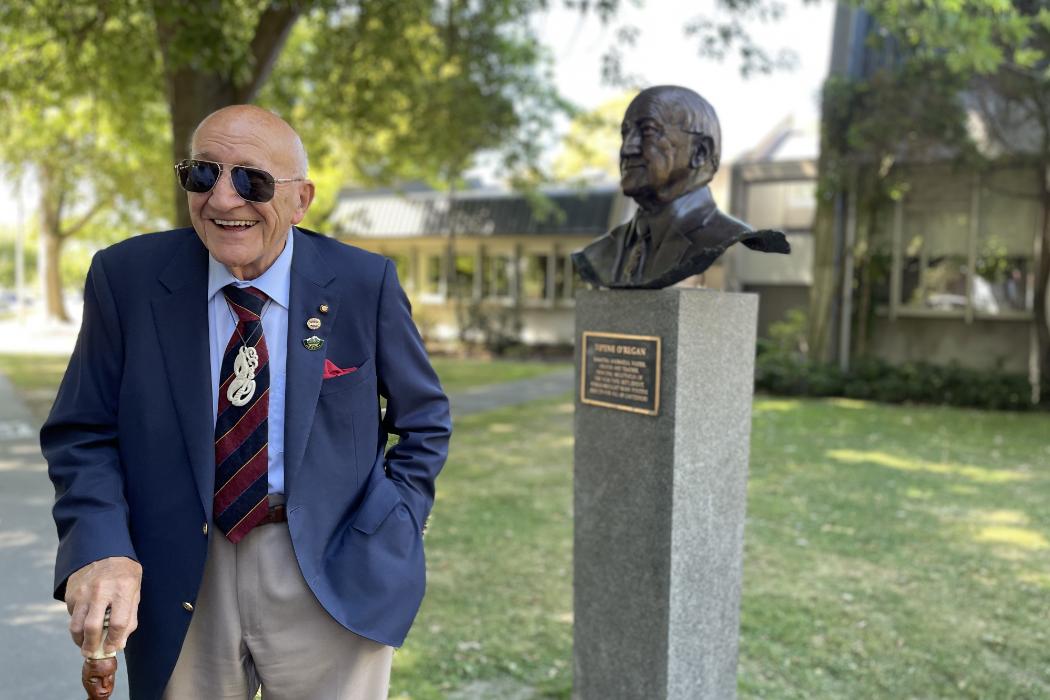“We are a bi-cultural city with an increasingly multi-cultural makeup. The collaboration between our students, Christchurch City Libraries and Place in Time: The Christchurch Documentary Project presented a challenge to document real people in real places across Ōtautahi,” Veling says.
“This has resulted in an online documentary archive, accessible via canterburystories.nz and Place in Time’s own website (placeintime.org). Work made by students, especially seen in conjunction with pre-existing resources and other upcoming projects and initiatives, is an attempt to capture and share the wonderful sense of community and collective identity of the city we call home.”
In one extraordinary image, a girl dressed in pink walks out of a tomb reconstructed in Halswell Quarry Park as part of Easter celebrations. The carved, angular rockface of the old quarry mimics stylised stones that have been painted on the flat, wooden surfaces of the biblical structure – ‘He Is Risen’ written above its entrance.
The photographer is Ellie Waters, who spent her teenage years in Halswell and took part in the project during the first year it was offered to students as part of the University’s Professional and Community Engagement (PACE) programme. A Bachelor of Fine Arts graduate, Waters began the project by photographing people she knew.
“This project is quite sentimental to me,” she says. “I began by photographing people in their homes – people I knew who still lived in the area – and then I reached out to different community groups, churches, schools and local events.”
Waters says she benefitted from the experience in numerous ways. “This method of reaching out to groups proved useful in upping my confidence as a photographer. Reaching out to new groups of people and photographing them is an exercise which I’m sure has added to my skill level as a photographer today.”
In another image, Raymond and Colleen Holland share lunch in their Bishopdale kitchen. Raymond flashes a cheeky grin and Colleen laughs out loud. The joke is not revealed, but it’s clear Raymond is proud of himself for telling it. The photographer, Janneth Gil, also honed her skills as a UC Fine Arts student participating in the project.
“During the development of the work it gave me the opportunity to gain skills I’m currently using in my work life as an artist and photographer,” she says.
The benefits, however, went well beyond developing photographic technique and learning to work with different people.
“It became a stepping stone on the pathway to start working with community projects that are encouraging positive social change and unity in diversity,” Gil says.
“Most importantly, it gave me an excuse to explore and learn from our communities in Ōtautahi Christchurch, giving me a feeling of connection and helping me to find my tūrangawaewae, my place to stand.”
The project was initiated by Christchurch City Libraries. University of Canterbury students contributed to it through the university’s Professional and Community Engagement (PACE) internship programme, which gives students credits for working with community and company projects.
The exhibition opens with a free public talk by Veling and well-known photographers Glen Busch and Doc Ross, We Stand Here: Celebrating five years of the Christchurch Documentary Project, on 9 July at 6pm-7pm.
Explore the Place in Time: The Christchurch Documentary Project’s free, online archive based at the University of Canterbury’s School of Fine Arts.
A city for children
We Stand Here – Children’s vision for their Ōtautahi is a collaboration between students at Christchurch East School and Tim Veling, Senior Lecturer, School of Fine Arts, University of Canterbury, is presented alongside We Stand here – Celebrating five years of the Christchurch Documentary Project at Tūranga from 10 July.
Inspired by conversations and workshops that asked children to consider their connection to the central city and ideas that would make it feel like their place, the resulting panoramic artwork reveals creativity, imagination, and an aspirational city they would feel proud to call ‘home’.
Children who visit the exhibition can create their own artwork to express their feelings about a more liveable Ōtautahi.
Both exhibitions run until 27 September.


